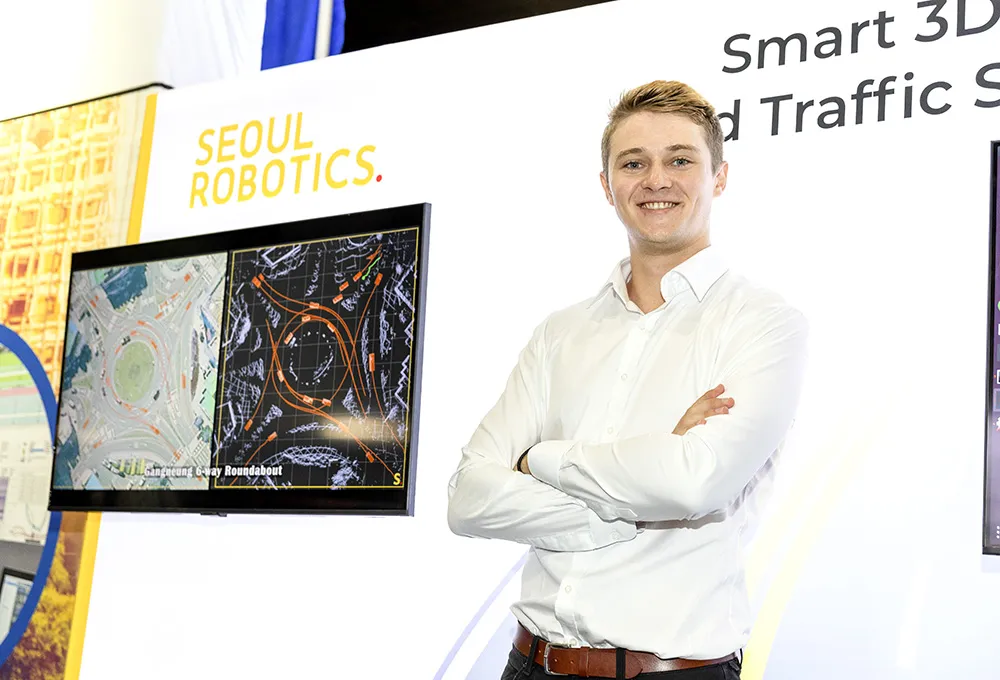On-street trials of AGD Systems’ latest intelligent radar detection system, the 318, developed for the detection and monitoring of vehicles in single lanes or highways environments, are now under way in the UK, Taiwan, South Africa, Turkey and Qatar.
The new above-ground intelligent radar detector has been designed in response to market demand for accurate strategic detection, the new radar is equipped with an intuitive, Bluetooth-enabled graphical user interface allowing users to configure and set cust
December 17, 2013
Read time: 3 mins
On-street trials of 559 AGD Systems’ latest intelligent radar detection system, the 318, developed for the detection and monitoring of vehicles in single lanes or highways environments, are now under way in the UK, Taiwan, South Africa, Turkey and Qatar.
The new above-ground intelligent radar detector has been designed in response to market demand for accurate strategic detection, the new radar is equipped with an intuitive, Bluetooth-enabled graphical user interface allowing users to configure and set customised, reliable detection positions specified as ranges up to 150 metres from the radar. Road authorities and agencies can determine the speed of vehicle targets they are interested in from 10kph to 250kph and the direction of travel.
According to AGD, the 31’ gives customers new functions to accurately detect moving vehicles at specific positions from the radar. Unlike traditional Doppler radars, which have no range measurement capability, the new device can measure the range to a target as well as simultaneously measure its speed and direction in applications such as: traffic monitoring in a multi-lane highway environment; wrong-way detection on entry/exit slip roads; all-red clearance detection at junctions and dedicated filter lane detection.
The new radar is available in two formats, a stand-alone version with up to two switched opto detection outputs which can be independently configured by the user interface and a dynamic version with RS422 communications for use in host systems in which up to ten multiple targets can be detected simultaneously and all event data is passed quickly and in real time to the host system.
Pete Hutchinson, managing director of AGD Systems, said: “Vehicle speed measurement accuracy is absolutely crucial to our customers and partners alike. The 318 offers a unique and distinct offering to the market. Firstly, during manufacture, it has its range measurement capability calibrated against a true range target simulation on our Hyperion testing equipment. This ensures that a range reading of 80 metres given by the radar is truly 80 metres to the target in the real on-street application.
“Secondly, the radar has been specially designed so that the range measurement is independent from its environmental operating conditions. When the ambient temperature varies over the specified temperature range of -20 to +60 degrees centigrade, the radar range measurement remains accurate, unlike some radars on the market which are known to vary by as much as 12 per cent over this temperature range.”
The new above-ground intelligent radar detector has been designed in response to market demand for accurate strategic detection, the new radar is equipped with an intuitive, Bluetooth-enabled graphical user interface allowing users to configure and set customised, reliable detection positions specified as ranges up to 150 metres from the radar. Road authorities and agencies can determine the speed of vehicle targets they are interested in from 10kph to 250kph and the direction of travel.
According to AGD, the 31’ gives customers new functions to accurately detect moving vehicles at specific positions from the radar. Unlike traditional Doppler radars, which have no range measurement capability, the new device can measure the range to a target as well as simultaneously measure its speed and direction in applications such as: traffic monitoring in a multi-lane highway environment; wrong-way detection on entry/exit slip roads; all-red clearance detection at junctions and dedicated filter lane detection.
The new radar is available in two formats, a stand-alone version with up to two switched opto detection outputs which can be independently configured by the user interface and a dynamic version with RS422 communications for use in host systems in which up to ten multiple targets can be detected simultaneously and all event data is passed quickly and in real time to the host system.
Pete Hutchinson, managing director of AGD Systems, said: “Vehicle speed measurement accuracy is absolutely crucial to our customers and partners alike. The 318 offers a unique and distinct offering to the market. Firstly, during manufacture, it has its range measurement capability calibrated against a true range target simulation on our Hyperion testing equipment. This ensures that a range reading of 80 metres given by the radar is truly 80 metres to the target in the real on-street application.
“Secondly, the radar has been specially designed so that the range measurement is independent from its environmental operating conditions. When the ambient temperature varies over the specified temperature range of -20 to +60 degrees centigrade, the radar range measurement remains accurate, unlike some radars on the market which are known to vary by as much as 12 per cent over this temperature range.”









